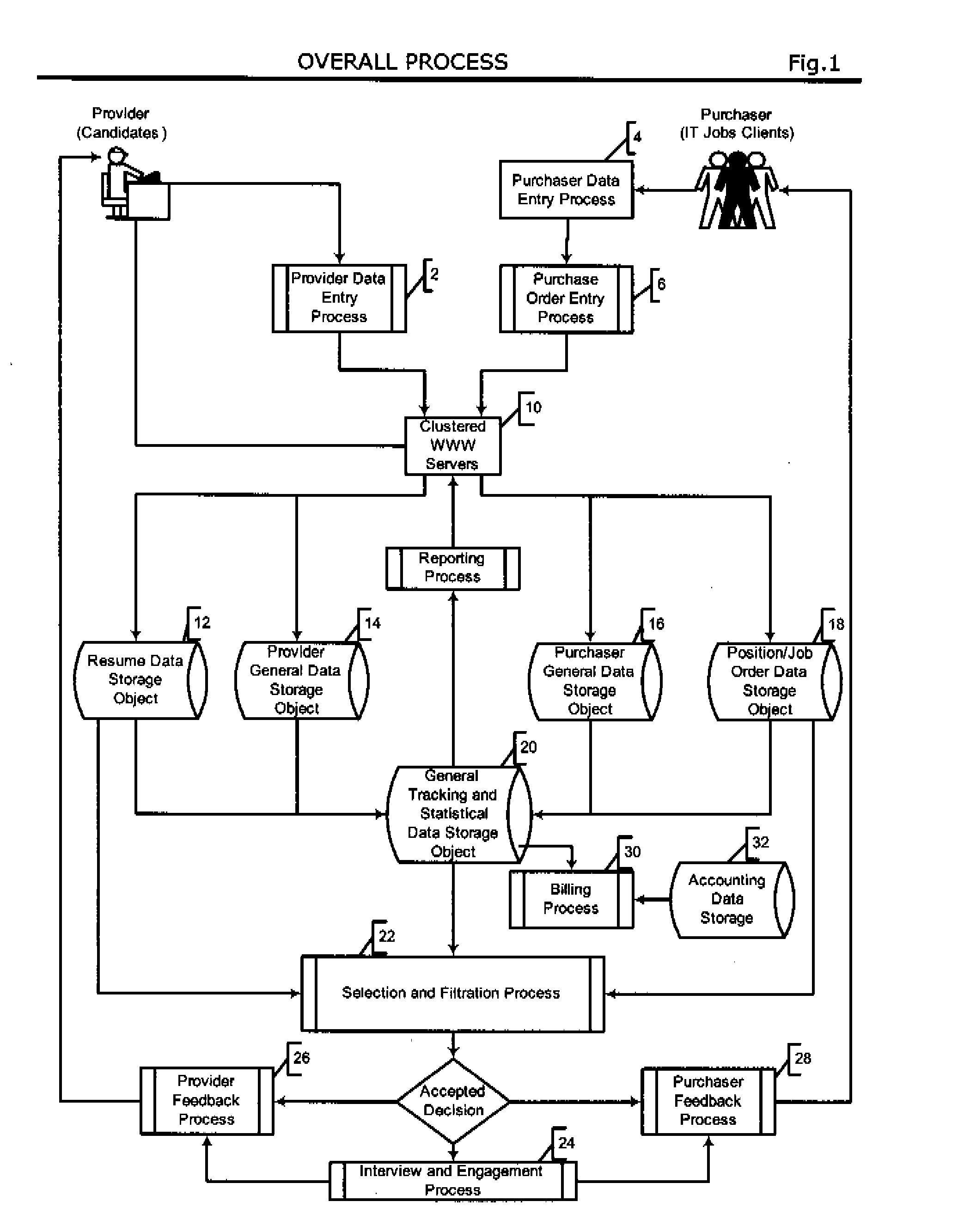This represents a significant drawback of existing systems and methods because the many tasks to be tracked by humans are susceptible to
human error.
Such errors could lead to inefficiencies in both how the system operates as well as the cost involved in operating the system.
None of these systems effectively automate, with little or no human intervention, the
management functions in human shopping and selecting processes.
First, the people that created these systems typically believe that human judgement is needed in order to make many of the lower-level decisions related to the shopping and selection of human beings or human organizations, such as interpreting the results of interviews or testing. Accordingly, these same people generally conclude that humans are also needed for the
management functions.
Second, humans have always played the management role, therefore it is concluded that humans must still be needed in this role (i.e social
inertia).
Third, there have been insufficient economic incentives to eliminate humans from the management role.
Fourth, it is not clear that
automation can successfully carry out the management role.
No one has attempted to substantially or completely automate the management of the process of selecting humans.
However, this is not necessarily the case.
One problem with existing human shopping systems is as follows.
Thus, one of the problems with existing services is that, even if there are several different sets of questions asked for different purposes, the number of different sets of questions is not large enough to reach highly useful conclusions.
In sum, the use of a small number of different sets of questions and small number of different options within questions generates conclusions that are of limited usefulness to the human shoppers.
It can be appreciated how this will lead to inefficiencies and / or errors in the matching of human shoppers and the humans they are seeking.
Inappropriate recommendations may waste the time and resources of human shoppers.
As discussed above, a human shopping service that uses only one or a small number of question sets and a small number of multiple-choice options may not generate highly useful results.
This is because the particular sets of questions and multiple-choice options available do not exactly or at least efficiently serve each human shopper's purpose.
This requires that the service update the knowledge-base of technology skills and job categories continuously, a costly and difficult effort since it requires detailed and current knowledge of all the areas of job categories and related technology skills Furthermore, the process of updating may require substantial human input to actually provided the updated information into the system.
In a typical
expert system, the method by which the conclusion is reached is difficult to define rigorously.
In such systems or methods, problems arise where the information provided is not accurate.
Inaccurate information may be provided inadvertently or intentionally.
Also, an individual may misrepresent his or her characteristics in hopes of being matched with a “better” date or a prospective employee may misrepresent his or her qualifications in hopes appearing more qualified to get a better job.
Either way, the resulting match is not desirable or at least is not as beneficial as it otherwise should be.
Such testing or interviewing may indeed
expose inaccurate information.
The process of testing and interviewing typically used, however, is normally an inexact process for inspection and
verification, since the processes typically used do not attempt to accurately inspect and verify every claim made or piece of information given by a human shopper.
But to customize the test for each employee and each job position would generally require too great an effort.
However, there is no assurance that any particular interviewer is expert enough to properly evaluate the claims of the job-seeker on every point that may be relevant and / or necessary.
 Login to View More
Login to View More  Login to View More
Login to View More 


